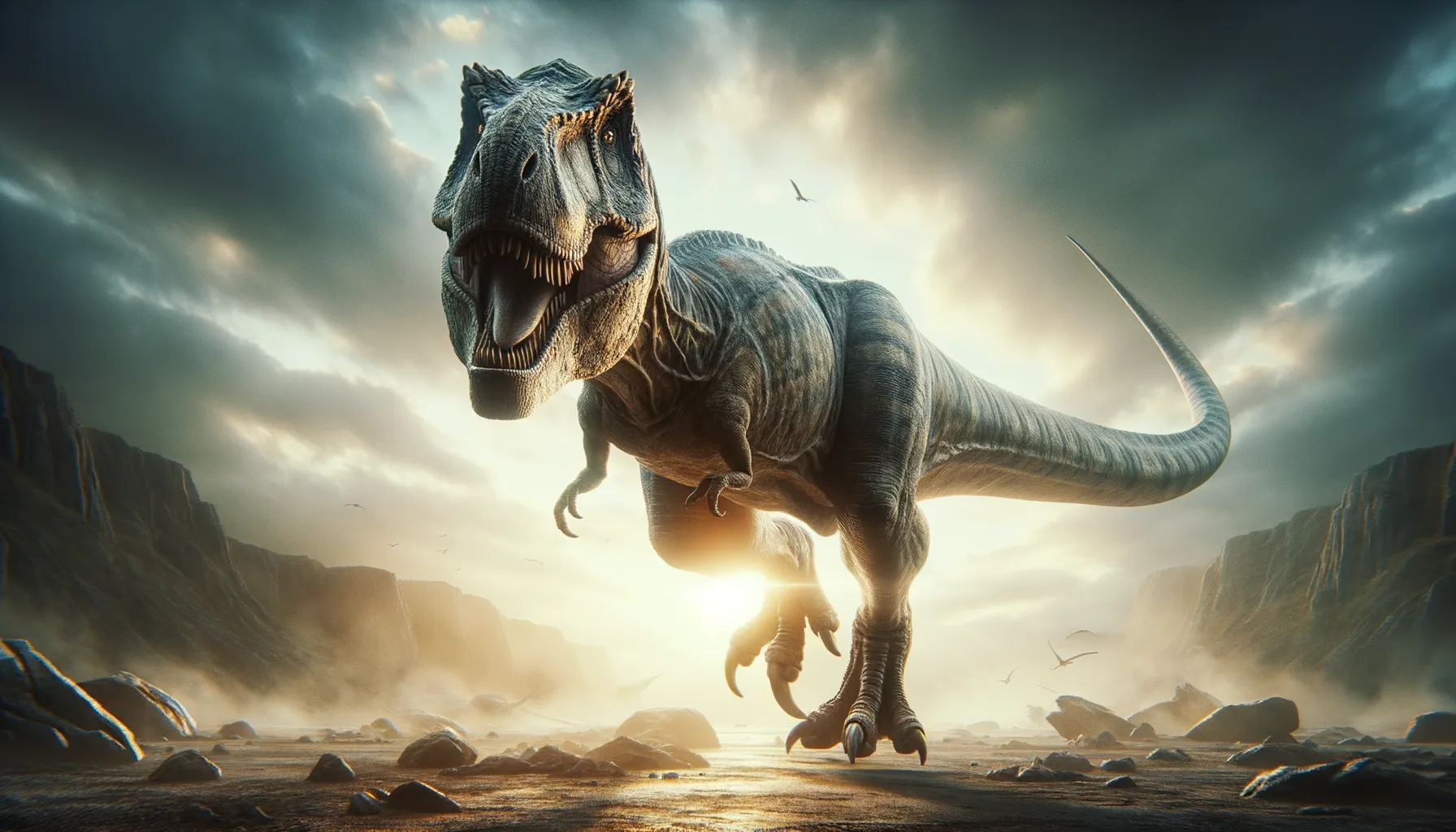
Gorgosaurus
A fierce predator from the Cretaceous past.
Period
Cretaceous
Length
Measured roughly 26 to 30 feet in length.
Height
Stood approximately 9 feet tall at the hips.
Weight
Weighed around 2 to 3 tons.
Gorgosaurus was a formidable tyrannosaurid dinosaur that lived around 76 to 75 million years ago. With powerful jaws and sharp teeth, it was a top predator in its ecosystem. Its fossils have provided significant insights into the behavior and ecology of tyrannosaurids. Gorgosaurus's close resemblance to Tyrannosaurus rex showcases evolutionary adaptations that made these creatures efficient hunters.
Diet
Gorgosaurus was a carnivore, preying mainly on other dinosaurs of its time. Its diet likely included large herbivorous dinosaurs, which it would hunt or scavenge.
Hunting
Gorgosaurus was likely an ambush predator, using its keen senses to track prey. It had a strong bite force, capable of taking down large dinosaurs quickly and efficiently.
Environmental challenges
Gorgosaurus lived in a dynamic environment with fluctuating climates, which could affect its food supply. Seasonal changes may have led to competition for resources with other predatory dinosaurs. Natural disasters, like floods and volcanic activity, also posed challenges to survival.
Speed
Moderate runner, similar to other tyrannosaurs.
Lifespan
Estimated to be 20 to 30 years in the wild.
First discovery
First discovered in Alberta, Canada in 1914.
Fun Facts
- Gorgosaurus lived around 76 to 75 million years ago during the Late Cretaceous period.
- Gorgosaurus was a meat-eating dinosaur and a relative of the famous Tyrannosaurus rex, but it was a bit smaller in size.
- Paleontologists believe Gorgosaurus could weigh as much as a modern elephant, making it a formidable predator.
- Fossils of Gorgosaurus have been found primarily in what is now Alberta, Canada, providing valuable insights into the ecosystem they lived in.
- Gorgosaurus had dozens of sharp, serrated teeth, perfect for slicing through the flesh of its prey.
- Unlike T. rex, which had two fingers, Gorgosaurus had three fingers on each hand, which might have helped it grasp prey.
- Paleontologists have discovered well-preserved Gorgosaurus fossils, giving them a clearer picture of its anatomy and way of life.
Growth and Development
Gorgosaurus experienced rapid growth, especially in its juvenile years. It reached maturity by its teenage years, at which point growth slowed down. Evidence suggests that it might have faced high mortality rates in the wild due to environmental pressures and competition.
Habitat
Gorgosaurus inhabited river valleys and floodplains, which provided rich hunting grounds. Its environment included forests and open areas, offering a range of hunting and scavenging opportunities. Water sources were crucial for both prey and predator survival.
Interaction with other species
Gorgosaurus likely competed with other large carnivores, who posed significant competition for food. It may have occasionally scavenged, benefiting from the kills of other predators. It also interacted indirectly with herbivorous dinosaurs, which formed its primary prey base.
Natural lifespan
Its natural lifespan was about two decades.
Reproduction
Gorgosaurus likely laid eggs, similar to other theropod dinosaurs. It might have exhibited nesting behaviors, guarding its eggs until they hatched. Juveniles were relatively independent, needing to adapt quickly to the dangerous world around them.
Social behaviour
Though primarily believed to be solitary hunters, Gorgosaurus may have formed temporary groups, especially during juvenile years. Such groups would provide better protection and increased hunting success. However, as adults, they were likely fiercely territorial.
Fossil locations
Fossils of Gorgosaurus have been primarily found in Alberta, Canada, particularly in the Dinosaur Park Formation. Some specimens have also been uncovered in Montana, USA, contributing to our knowledge of its geographic range. The rich fossil deposits in these areas have provided valuable data on its anatomy and ecology.
